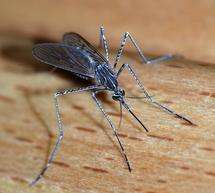Oxford researchers have created a new global map of malaria which will help curb the disease in the future.
Using data from nearly 8000 local surveys of malaria parasite infection rates, an international team of researchers has built a global map showing the proportion of the population infected with the parasite Plasmodium falciparum at locations throughout the globe. Published in this week's PLoS Medicine, the map shows that areas where a high proportion of residents are infected are common - but by no means uniform - in Africa, while lower prevalence levels are found in the Americas and Central and Southeast Asia, although pockets of intermediate and high transmission remain in some parts of Asia.
Malaria is one of the most common infectious diseases in the world; the P. falciparum parasite causes about 500 million cases each year, and about 40% of the world's population lives in areas where malaria is transmitted.
The team of researchers, led by Simon Hay from the Department of Zoology at the University of Oxford, shows that global malaria endemicity is substantially lower than would be predicted from inspection of historical maps. Nevertheless, their map indicates that, in 2007, almost 60% of the 2.4 billion people at any risk of malaria were living in areas where malaria is constantly present - 0.69 billion people in Central and South East Asia, 0.66 billion in Africa, Yemen, and Saudi Arabia, and 0.04 billion in the Americas.
Part of the Malaria Atlas Project, the new map reflects the use of model-based geostatistics to incorporate data obtained across space and time. It provides an important new resource by indicating areas where malaria control can be improved, as well as areas where malaria elimination may be possible. Prior to this study, the most recent global map of P. falciparum endemicity was published in 1968 and suffered from a number of limitations, such as incomplete description of the input data used and lack of estimates for the uncertainty in its predictions. In contrast, because of the statistical methods used to construct the new map published in PLoS Medicine, it is possible to quantify the uncertainty in the results.
"The state of the P. falciparum malaria world in 2007 represents an enormous opportunity for the international community to act," say the authors. "This cartographic resource will help countries determine their needs and serve as a baseline to monitor and evaluate progress towards interventional goals."
More information: Hay SI, Guerra CA, Gething PW, Patil AP, Tatem AJ, et al. (2009) A world malaria map: Plasmodium falciparum endemicity in 2007. PLoS Med 6(3): e1000048. doi:10.1371/journal.pmed.1000048, medicine.plosjournals.org/perl … journal.pmed.1000048
Source: Public Library of Science (news : web)




















